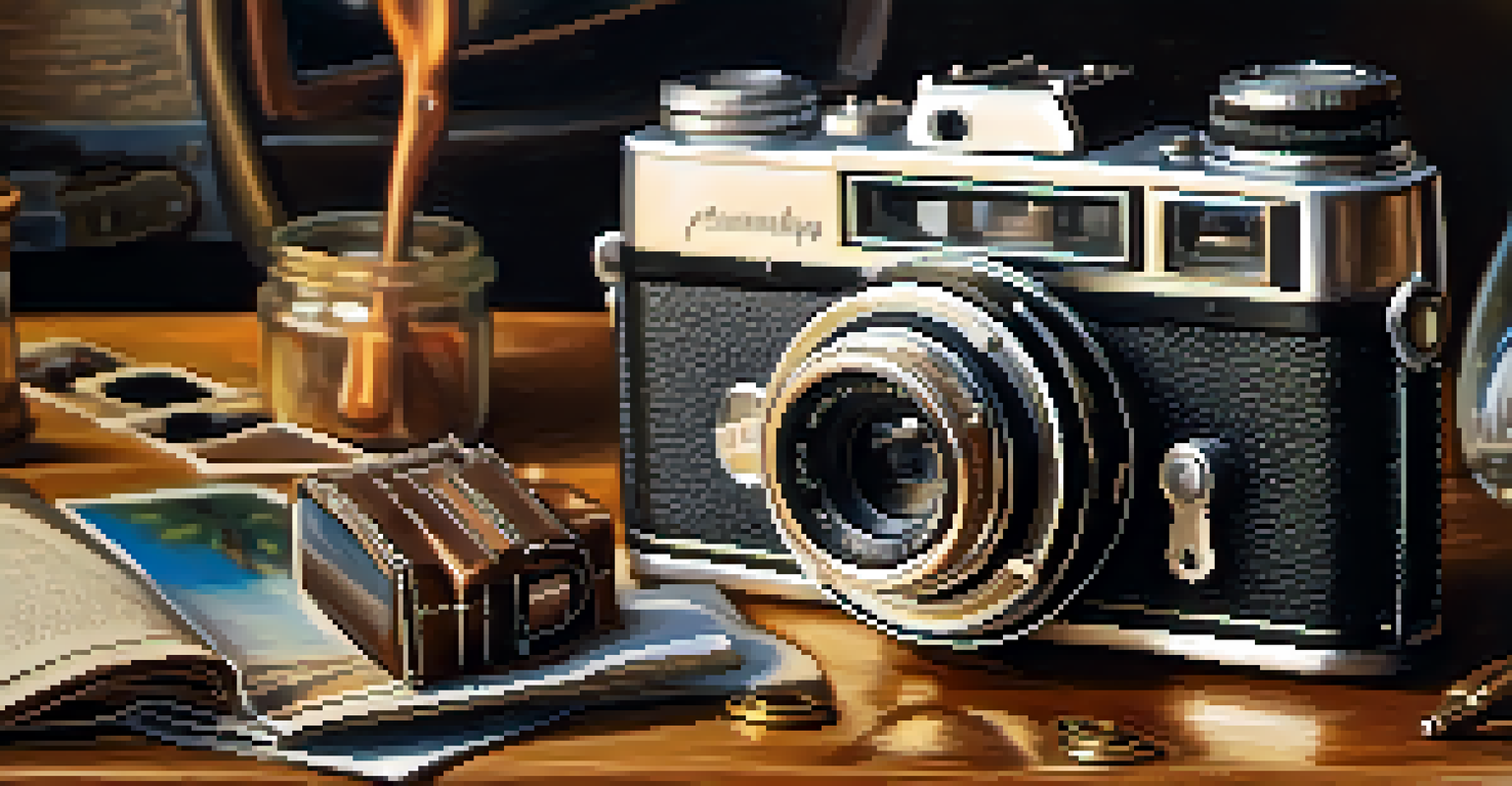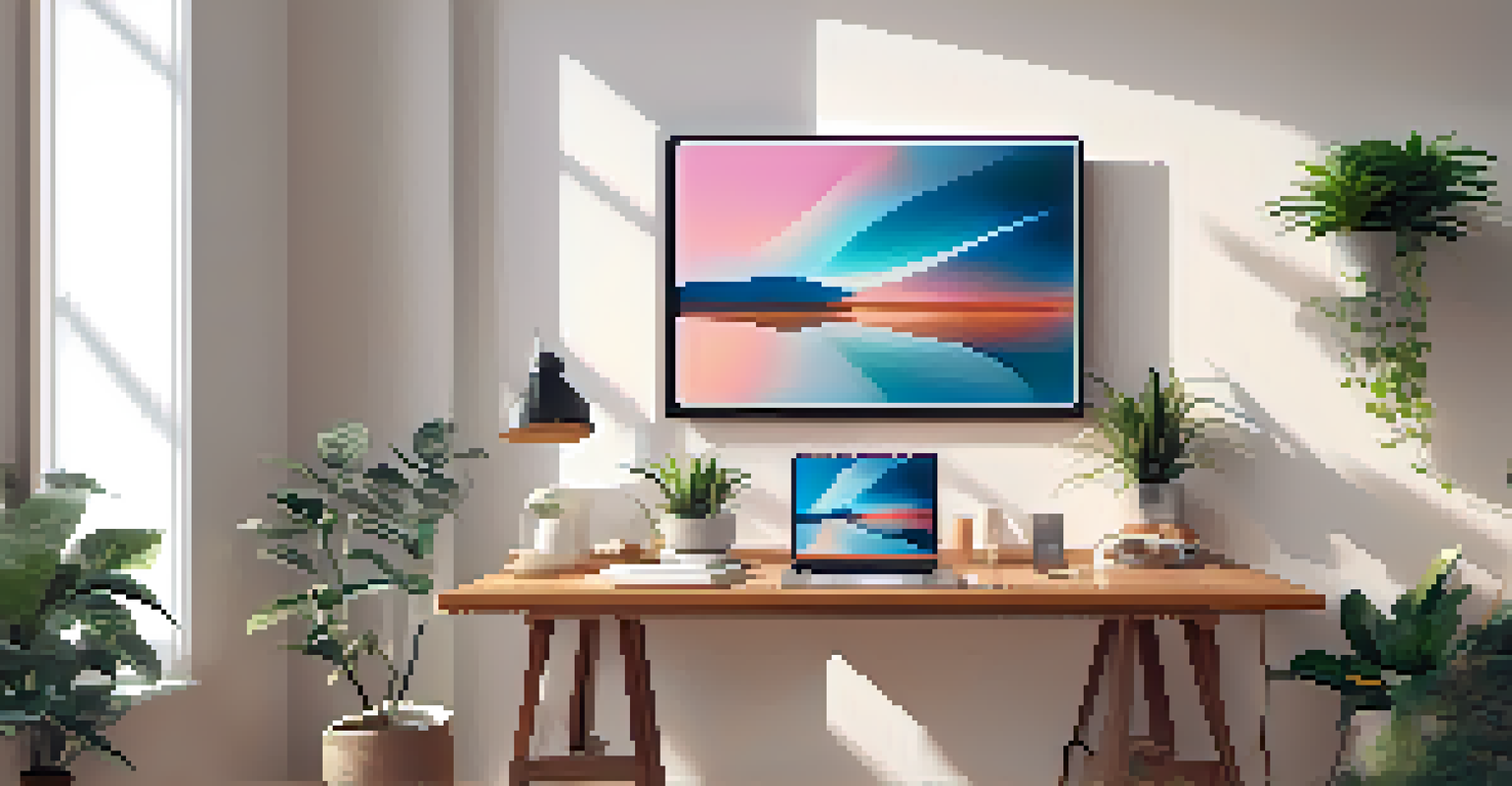NFT Marketplaces: Where Photographers Should Sell Their Work

Understanding NFTs and Their Role in Photography
NFTs, or Non-Fungible Tokens, are unique digital assets that represent ownership of a specific item, often art. For photographers, NFTs provide a revolutionary way to sell their work by ensuring authenticity and scarcity. This means that when a photographer sells an NFT, the buyer receives a verifiable proof of ownership, which can increase the perceived value of the image.
NFTs are a new way to monetize digital art, providing artists with the tools to sell their work directly to collectors.
Unlike traditional prints or digital downloads, NFTs are stored on a blockchain, making them tamper-proof and easily transferable. This technology allows photographers to reach a global audience without the need for galleries or intermediaries, giving them more control over their work and profits. As a result, many photographers are now exploring this new frontier as a way to monetize their art effectively.
However, entering the NFT space does require some understanding of blockchain technology and digital wallets. While it may seem daunting, many resources are available to help photographers get started. Embracing NFTs could very well be the next big step in a photographer's career.
Key Features to Look for in NFT Marketplaces
When selecting an NFT marketplace, photographers should consider several key features. Look for platforms that are user-friendly, especially if you’re new to the NFT world. An intuitive interface can make the process of minting (creating) your NFT much smoother, allowing you to focus on your creative work rather than technical hurdles.

Another important feature is the audience size and engagement on the platform. A marketplace with a vibrant community can significantly increase the chances of selling your work. It’s also beneficial to choose platforms that cater specifically to art and photography, as these audiences are more likely to appreciate and invest in your creations.
NFTs Empower Photographers
NFTs provide photographers with a way to sell their work while ensuring authenticity and control over their profits.
Lastly, consider the fees involved in selling your work. Different marketplaces have varying structures for listing, selling, and transaction fees. Understanding these costs beforehand can help photographers maximize their profits and avoid surprises down the line.
Top NFT Marketplaces for Photographers
There are several NFT marketplaces tailored for photographers, each offering unique benefits. OpenSea is one of the largest platforms, providing a diverse audience and a wide range of digital art categories, including photography. It's user-friendly, making it a great option for beginners looking to dip their toes into the NFT waters.
The future of art is digital, and NFTs are a critical part of that future.
Another noteworthy platform is Foundation, which focuses on high-quality digital art and allows artists to invite other creators to join. This exclusivity can create a sense of community and enhance the perceived value of your work. Plus, Foundation has a streamlined process for minting NFTs, which is a huge plus for busy photographers.
Lastly, Rarible is a decentralized marketplace that empowers creators. It allows photographers to set their own royalties on secondary sales, ensuring they benefit from their work even after the initial sale. Exploring these options can lead photographers to find the right fit for their unique style and audience.
How to Mint Your First NFT
Minting your first NFT might sound complex, but it’s a manageable process with the right guidance. To start, you’ll need a digital wallet compatible with the blockchain of your chosen marketplace. This wallet will store your NFTs and any cryptocurrencies you earn from sales, so choose one that is reputable and secure.
Once your wallet is set up, you can upload your photography to the marketplace. Each platform has its specific requirements, so make sure your images meet those standards. After uploading, you’ll fill out details like title, description, and pricing, which are essential for attracting potential buyers.
Choosing the Right Marketplace
Photographers should consider user-friendliness, audience engagement, and fee structures when selecting an NFT marketplace.
The final step in minting is to confirm the transaction through your wallet, which may incur a small fee known as 'gas' on some blockchains. Once confirmed, your NFT will be live for sale! Remember, promoting your work on social media and in photography communities can also boost visibility and sales.
Pricing Strategies for Your NFTs
Setting the right price for your NFTs is crucial in attracting buyers while ensuring you don’t undervalue your work. One effective pricing strategy is to research similar works on the marketplace to understand what prices are common. This gives you a benchmark to gauge the market and set competitive prices.
Consider experimenting with different pricing models, such as auctions or fixed prices. Auctions can create excitement and competition among buyers, potentially driving the price higher. On the other hand, a fixed price can appeal to buyers looking for certainty in their purchases, especially if they are new to the NFT space.
Additionally, think about offering limited editions or exclusive pieces at higher price points. This scarcity can increase demand and allow you to command a premium price for your work. Ultimately, finding the right balance between art value and market demand is key.
Marketing Your NFT Photography
Once your NFT is minted and listed for sale, marketing your work becomes essential. Social media platforms like Instagram and Twitter are great for showcasing your photography and generating interest. Share behind-the-scenes stories about your work, the creative process, and the significance of NFTs to connect with potential buyers on a deeper level.
Joining NFT and photography communities online can also help you network and build relationships with other artists and collectors. Participating in discussions, collaborations, and even giveaways can increase your visibility and credibility in the space. The more you engage, the more likely others will support your work.
Marketing Your NFT Art
Effective marketing through social media and community engagement is crucial for photographers to promote their NFT creations.
Don’t hesitate to create a dedicated website or portfolio showcasing your NFT photography. This serves as a professional space for potential buyers to learn more about you and your art. Remember to keep your branding consistent across platforms to build a recognizable identity in the NFT marketplace.
Navigating Challenges in the NFT Space
While the NFT marketplace offers exciting opportunities, it’s not without its challenges. One significant issue is the environmental impact of blockchain technology, particularly those that use energy-intensive proof-of-work systems. As a photographer, it’s essential to consider the implications of your choices and explore eco-friendly alternatives like Ethereum 2.0 or other sustainable platforms.
Another challenge is the market’s volatility. Prices can fluctuate dramatically, which may affect the selling potential of your work. Staying informed about market trends and being adaptable can help you navigate these ups and downs effectively.

Lastly, there’s the risk of copyright infringement and theft in the digital space. Protecting your work is paramount, so consider watermarking your images or clearly defining usage rights in your NFT descriptions. By being proactive about these issues, you can enjoy the benefits of the NFT marketplace while safeguarding your creative assets.